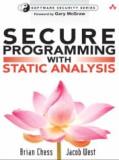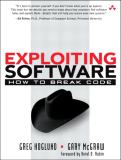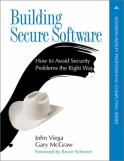Books in the Software Security Series
 |
Enterprise Software Security Writing for all software and security practitioners and leaders, they show how software can play a vital, active role in protecting your organization. You’ll learn how to construct software that actively safeguards sensitive data and business processes and contributes to intrusion detection/response in sophisticated new ways. The authors cover the entire development lifecycle, including project inception, design, implementation, testing, deployment, operation, and maintenance. They also provide a full chapter of advice specifically for Chief Information Security Officers and other enterprise security executives. |
 |
Surreptitious Software: Obfuscation, Watermarking, and Tamperproofing for Software Protection The last decade has seen significant progress in the development of techniques for resisting software piracy and tampering. These techniques are indispensable for software developers seeking to protect vital intellectual property. Surreptitious Software is the first authoritative, comprehensive resource for researchers, developers, and students who want to understand these approaches, the level of security they afford, and the performance penalty they incur. Christian Collberg and Jasvir Nagra bring together techniques drawn from related areas of computer science, including cryptography, steganography, watermarking, software metrics, reverse engineering, and compiler optimization. Using extensive sample code, they show readers how to implement protection schemes ranging from code obfuscation and software fingerprinting to tamperproofing and birthmarking, and discuss the theoretical and practical limitations of these techniques. |
 |
Software Security Engineering: A Guide for Project Managers Software that is developed from the beginning with security in mind will resist, tolerate, and recover from attacks more effectively than would otherwise be possible. Whether you are a project manager, lead requirements analyst, software architect, or systems integrator, Software Security Engineering: A Guide for Project Managers will teach you how to manage the development of secure, software-intensive systems. You'll also come away with the tools you need to identify and compare potential new practices that can be adapted to augment your current practices. |
 |
Exploiting Online Games Exploiting Online Games frankly describes controversial security issues surrounding MMORPGs such as World of Warcraft. This no-holds-barred book comes fully loaded with code examples, debuggers, bots, and hacks. if you are a gamer, a game developer, a software security person or an interested bystander, this book exposes the inner workings of online game security for all to see. It discusses and describes security problems associated with advanced massively distributed software. With hundreds of thousands of interacting users, today's online games are a bellwether of modern software. The kinds of attack and defense techniques described in Exploiting Online Games are tomorrow's security techniques on display today. |
 |
Secure Programming with Static Analysis Static analysis experts Brian Chess and Jacob West look at the most common types of security defects that occur today. They illustrate main points using Java and C code examples taken from real-world security incidents, showing how coding errors are exploited, how they could have been prevented, and how static analysis can rapidly uncover similar mistakes. This book is for everyone concerned with building more secure software: developers, security engineers, analysts, or testers. |
 |
Software Security: Building Security In Beginning where the best-selling book Building Secure Software left off, Software Security teaches you how to put software security into practice. The software security best practices, or touchpoints, described in this book have their basis in good software engineering and involve explicitly pondering security throughout the software development lifecycle. |
 |
Rootkits: Subverting the Windows Kernel Rootkits are the ultimate backdoor, giving hackers ongoing and virtually undetectable access to the systems they exploit. Now, two of the world's leading experts have written the first comprehensive guide to rootkits: what they are, how they work, how to build them, and how to detect them. Rootkit.com's Greg Hoglund and James Butler created and teach Black Hat's legendary course in rootkits. In this book, they reveal never-before-told offensive aspects of rootkit technology—learn how attackers can get in and stay in for years, without detection. |
 |
Exploiting Software: How to Break Code How does software break? How do attackers make software break on purpose? Why are firewalls, intrusion detection systems, and antivirus software not keeping out the bad guys? What tools can be used to break software? This book provides the answers. Exploiting Software is loaded with examples of real attacks, attack patterns, tools, and techniques used by bad guys to break software. If you want to protect your software from attack, you must first learn how real attacks are really carried out. |
 |
Buiding Secure Software Building Secure Software cuts to the heart of computer security to help you get security right the first time. If you are serious about computer security, you need to read this book, which includes essential lessons for both security professionals who have come to realize that software is the problem, and software developers who intend to make their code behave. Written for anyone involved in software development and use--from managers to coders--this book is your first step toward building more secure software. |
 |
Software Security Library This box set collects Building Secure Software, Exploiting Software, and Software Security in one place. |
Copyright © 2006, Gary McGraw
